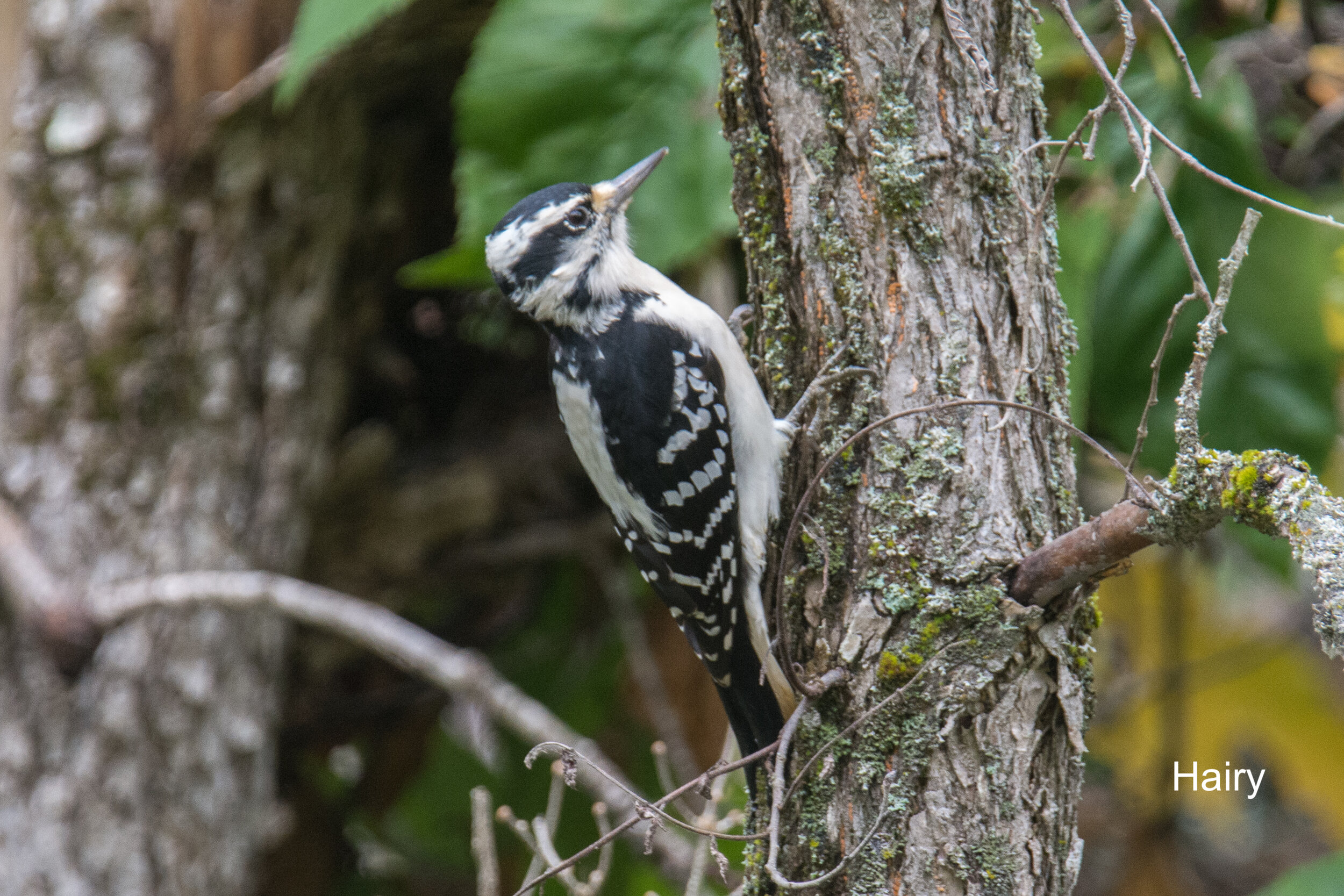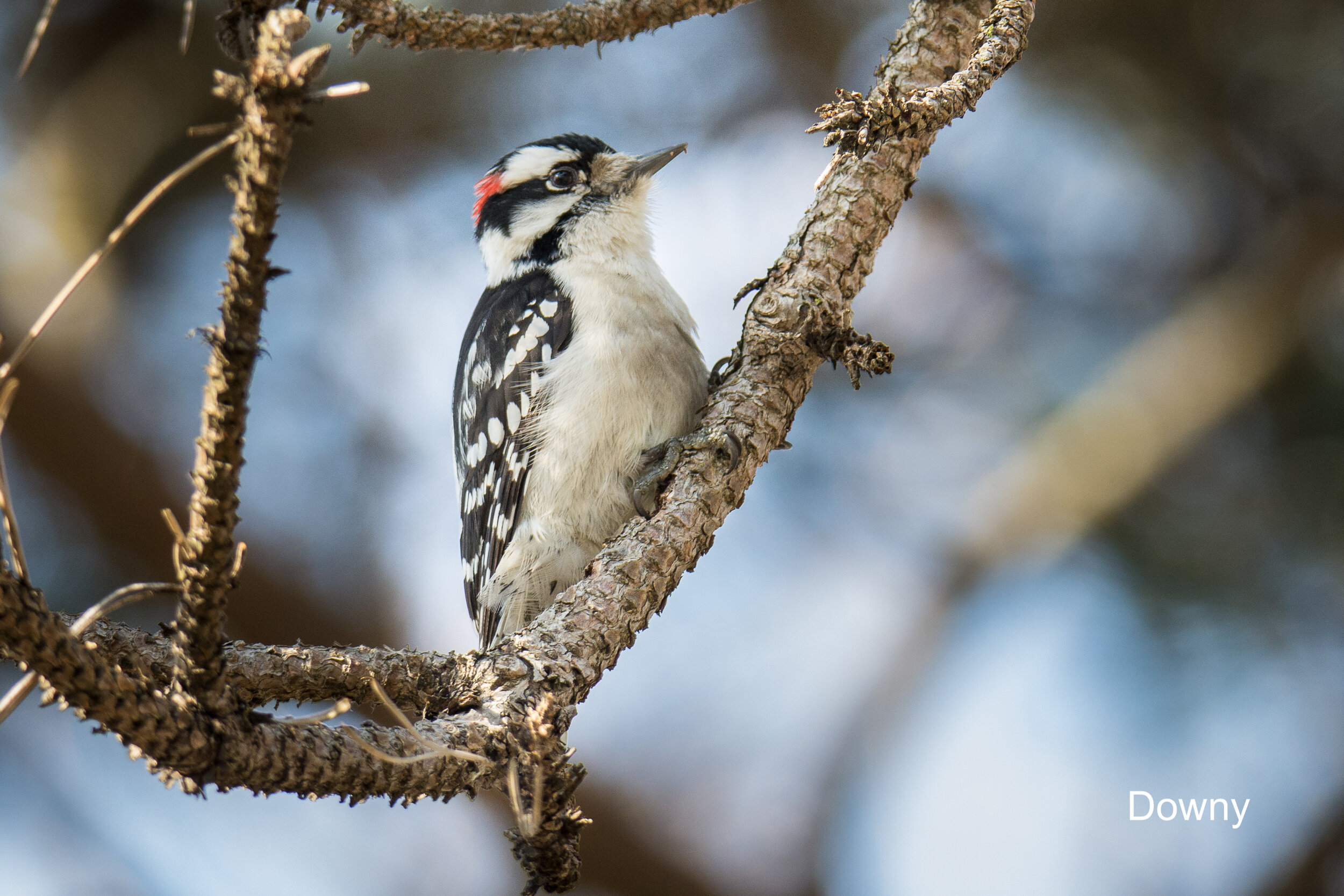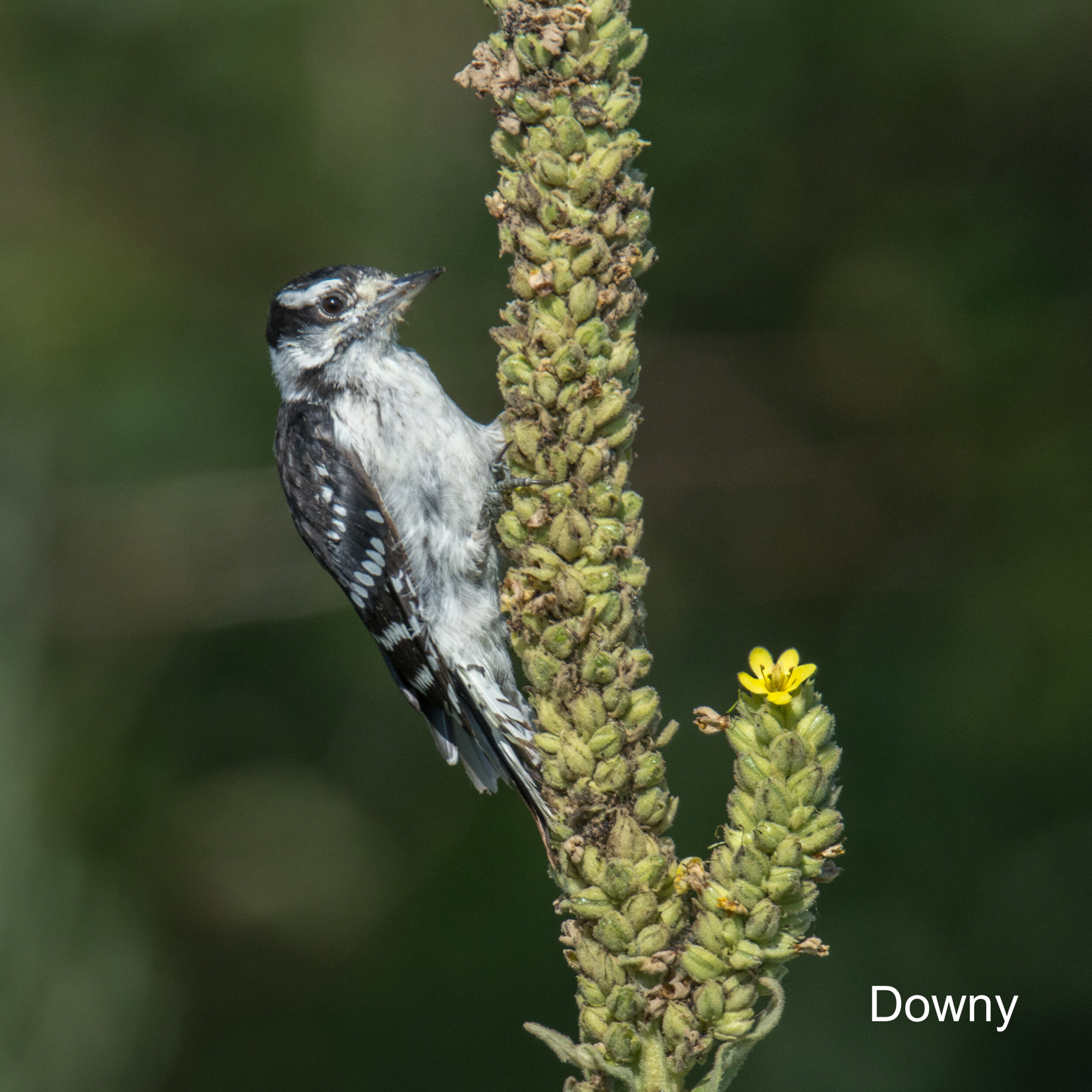Dan's Feathursday Feature: Hairy and Downy Woodpeckers
Every birding field guide that I know of has what are called range maps. For each species the range map shows where in the world you can expect to find that bird, and during what time of the year. A typical field guide has multicolored range maps, with each color indicating the geographic range of each species during each season. In one guide that I use, orange is for the bird’s summer range, blue for its wintering territory. Yellow indicates where you’ll find the bird during the spring and fall migration. Purple marks territory where you can expect to find the bird all year long.
For the Hairy Woodpecker and the Downy Woodpecker the range maps are boring affairs, unless you’re partial to the color purple. From Alaska to Newfoundland, Florida to the Baja Peninsula, and all points in between, the range map for each of these woodpeckers is solid violet. These birds are non-migrating, stay-at-home species that can be found virtually anywhere in Canada and the United States any time of the year. Only one other North American bird matches the year-round blanket coverage of the Hairy and the Downy. (You might be surprised at what that other species is. I’m not going to tell you, though. Consult your field guide!)
I chose to write about the Hairy and Downy Woodpeckers together not just because they cover so much common territory, but because they are very similar in looks—so much so that they are often quite difficult to tell apart. Possibly one of the most common expressions in North American birding is “Oh, there’s a Downy Woodpecker…. Or is it a Hairy?” Their plumage is virtually identical. Here’s how one field guide describes the Downy Woodpecker: “Distinguished from all woodpeckers except Hairy by white patch on back and mostly unmarked whitish flanks.” And here is that same book describing the Hairy Woodpecker: “Distinguished from all woodpeckers except Downy by white patch on back and mostly unmarked whitish flanks.” Thanks, Mr. Sibley.
Granted, narrowing an ID challenge down to just two possibilities is a wonderful thing. But even in the absence of any distinguishing colors or plumage patterns, there are key differences in body size, bill size, voice and habitat that can help you get more specific with your ID than “It’s either a Downy or a Hairy.”
But I’ll leave those ID details to the field guides, because frankly when I think of these two look-alike birds, I prefer to think more about what they have in common than what separates them. And the single most important trait they share is the ability to put a smile on my face even in the coldest, grayest, bleakest days of winter.
Don’t get me wrong. When autumn winds grow colder, and snow begins to fly, I don’t spin a cocoon and hunker down until spring arrives. I enjoy winter. The stark simplicity of a denuded hardwood forest with a foot of snow. The cruelly bitter cold of a windswept prairie. Winter in the Midwest forces nature to strip itself down to the bare essentials, ridding itself of distracting colors and textures, and creating a level of sensory deprivation that ironically sharpens the senses and cleanses the soul. A walk through a winter forest is the equivalent of a zen retreat. I like it, and I do it often.
And I like it when from the silent gray and white forest I hear the rattling chuckle of a Downy Woodpecker. It sounds like a rapidly bouncing ping-pong ball that squeaks each time it hits the table, rising in pitch as the squeaks speed up. In the cold air the sound is crisp and loud. When I stop walking, I hear the soft scratching and tapping of the woodpecker as it searches for insects hiding in the crevices of the trees’ bark. Every minute or so it calls, with a sharp “pik” sound, like a dog’s squeaky toy. In a flash of black and white it shoots across my path and pastes itself to the side of a tree, proclaiming with its presence: “It may not look like it, but these woods are alive!”
And I smile.
Sometimes instead of a Downy it’s a Hairy Woodpecker that brings the smile. I’ll hear a “pik!” similar to the Downy, but stronger and more strident. If the Downy’s one-note call is like your terrier crisply biting its toy just enough to make it squeak, the Hairy’s call is your three-year-old smashing the dog’s toy with a plastic bat. You can tell them apart. The Hairy’s movements are brusque and businesslike—big jumps, as it works its way up the trunk and large branches. It has no time for smaller branches. As quickly as it appears, it’s gone, with an occasional “pik!” still audible in the distance.
And I smile.
Even in the dead of winter, this ubiquitous duo never disappoints. In a cedar swamp in northern Michigan, or an old-growth beech forest in central Ohio, or an oak savannah in northern Illinois, if our paths cross and you see me with a smile on my face, you’ll know I have been visited by a Downy or a Hairy Woodpecker. As this unforgettable year draws to a close, a year that in many ways has felt like one long winter, these little black and white wonders would get my vote for “Birds of the Year!”
Dan's Feathursday Feature is a regular contribution to the COS blog featuring the thoughts, insights and pictures of Chicago birder, Dan Lory on birds of the Chicago region.




